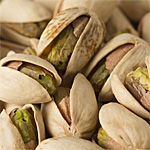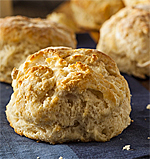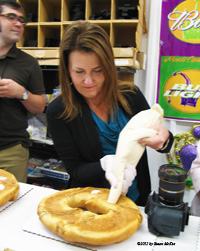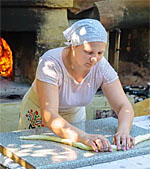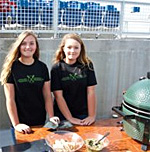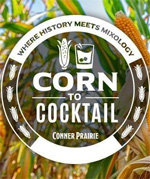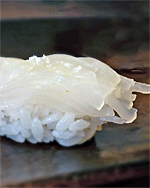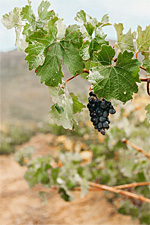Cajun Culinary Traditions
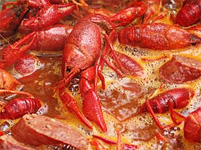 Special to Road Trips for Foodies
Special to Road Trips for Foodies
By St. Landry Parish Visitor Center
We Live our Culture – Each day in St. Landry Parish we engage in enduring traditions of history and culture – dancing to the exciting sounds of Cajun and zydeco music while enjoying the cuisine loved the world over. With its dramatic history and diverse cultures, St. Landry Parish boasts une différence, which few, if any, places in America can claim today. The influences here—Native American, European, African, Acadian, and American—have mixed and matched for more than three centuries to produce the rich and colorful experience that is St. Landry Parish today.
From boudin to yams and a little seasoning on the side, St. Landry Parish is the “Prairie Home Cooking” loop of Louisiana Culinary Trails and home to internationally known Chef Paul Prudhomme, Tony Chachere’s Creole Cajun Seasoning and the Bayou Teche Brewery featuring its own brand of Craft Beers that complement the regions local Cajun and Creole Cuisine. Local restaurants offer exclusive settings in historic landmarks featuring great Cajun and Creole food. And our many festivals celebrate our culinary treats like cracklins and etouffee! Located in central southwest Louisiana in Cajun Country, 20 minutes north of Lafayette and two hours west of New Orleans, St. Landry Parish is a gateway to the Atchafalaya Basin, and part of the Bayou Teche Corridor – within the Atchafalaya National Heritage Area. By traveling our Zydeco Cajun Prairie Scenic Byway, you’ll be sure to visit our many historic communities.
Culinary History
As St. Landry Parish is the site of one of the oldest European settlements in Louisiana, le Poste des Opélousas, an administrative territory established by the French in 1720, its’ cuisine naturally reflects its dramatic history and diverse cultures. Home of the Opelousas Indians, the district was larger than some European empires of the day. By 1791, the military outpost had been governed by the French and the Spanish, and was also settled by some English, Scotch, Irish and German colonists, as well as a group of Acadian exiles who managed to find their way to the lush and fertile lands of the district.
They found the area perfect for agriculture and raising cattle and the government post soon developed as a commercial center serving their farms and plantations. Men and women of African heritage began arriving in the 1700s as slaves with the first Europeans and in the late 1700s as gens de couleur libres or free people of color.
With this in mind, one might best describe the history of St. Landry Parish’s cuisine as that of a cultural gumbo!
The mild climate and rich soils allow a wide variety of vegetables to be grown year around. Also our many bayous and rivers and close proximity to the coast make seafood an important ingredient in our cuisine.
What typifies the area’s cuisine today?
Our French, Creole and Cajun culinary traditions of making the most delectable fare with the simplest of ingredients are still recreated today. Food is a “religion” in this part of the world and it’s the love and attention that goes into every dish – from the field to the table that is celebrated with every meal. The holy trinity includes onions, bell peppers and celery.
What are the area’s ingredients?
Rice, soybeans (vegetable oil), corn, okra, sweet potatoes, Irish potatoes, figs, pecans, pond raised crawfish, catfish, cattle, and poultry including guinea hens
What are the area’s unique dishes?
The dishes that would be most unique or indigenous to this area would be our stews, gumbos, bisques and fricasseés. What makes them unique to this area is that they all are made with “roux”. A roux is the combination of oil and flour in equal parts that is cooked by stirring constantly until it becomes a dark brown color – often compared to that of peanut butter. This base imparts a flavor that is rich and distinct. It also acts as a thickener to the dish.
A wonderful example of something so simple, yet so important to our culinary world. For those that have not mastered the skill of making a roux from scratch, all is not lost. Roux is also commercially produced, packaged in jars and readily available in grocery stores.
What is considered everyday food in this area?
Everyday food in this area would be rice and gravy of some sort, whether it be chicken, beef, pork or seafood. Many dishes are served with at least two seasonal vegetables (the more starches the better) and sliced white bread.
Our special events and seasonal foods
From December to June, it’s crawfish time and the numerous crawfish huts open their doors and get their burners blazing. Some of these restaurants even have drive-up windows for their “to go” orders of boiled crawfish. Of course, there are restaurants that serve the succulent crustaceans, as well as other crawfish items like etouffee and fried crawfish tails.
It is also during this time of year that the Lenten season is observed by this predominately Catholic area. For 40 days, many refrain from their favorite food or beverage and followers must abstain from meat on all Friday’s during Lent.
In earlier times, this was truly a form of penance and eggs often provided the needed protein in a dish (gumbos or stew with only eggs). Today with the abundance of crawfish and ease of obtaining fish, shrimp and oysters from the gulf, it’s definitely more of a treat and less of a sacrifice.
Hunting and fishing are favorite pastimes for both men and women, so naturally whatever the season may be our menus conform.
Spring and summer fishing bring sac-a-lait (crappie), brim and catfish that populate our local waters, so fish frys and the delicate preparation of courtbouillions are reasons to gather.
In the fall, the wonderful tradition of a boucherie is held. After the crops were in, our ancestors prepared meat for the winter months. Families gathered to butcher the hog. Boudin, hogshead cheese, cracklins and bouilli were made as every part of the pig was used. Sausage was stuffed and smoked, along with tasso, a seasoned meat that was used all year long in flavoring vegetables and gumbos. Today a stop at any local meat market or slaughterhouse will result in finding these long revered and essential items in the Cajun and Creole diet.
As the temperatures begin to drop, gumbo pots are filled with wild game, like ducks and geese. The aroma of slowly simmered gravies with doves and quail or even squirrels fill the air. And hearty stews, rich from the roux, stick to your bones. And of course in the winter months, everyone heads to the woods for some of the best deer hunting around. A “back strap” of venison is oh so flavorful. It’s hard to beat a venison chili on a damp Louisiana winter night.
All year long, barbecue pits and smokers are kept handy for weekend meals. Our sauces are made with lots of onions, resulting in a delightfully tangy accompaniment to chicken, ribs, and of pork steaks.
What are the area’s unique utensils?
Our fingers! So many of our wonderful foods are eaten with our hands, like boudin and cracklins, fried fish and hush puppies, boiled crawfish, shrimp and crabs.
Culinary Terms:
Sauce Piquant
Etouffée
Boudin
Cracklin
Tasso
Andouille
File
Courtbouillion
As St. Landry Parish is the site of one of the oldest European settlements in Louisiana, le Poste des Opélousas, an administrative territory established by the French in 1720, its cuisine naturally reflects its dramatic history and diverse cultures.
Home of the Opelousas Indians, the district was larger than some European empires of the day. By 1791, the military outpost had been governed by the French and the Spanish, and was also settled by some English, Scotch, Irish and German colonists, as well as a group of Acadian exiles who managed to find their way to the lush and fertile lands of the district.
They found the area perfect for agriculture and raising cattle and the government post soon developed as a commercial center serving their farms and plantations. Men and women of African heritage began arriving in the 1700s as slaves with the first Europeans and in the late 1700s as gens de couleur libres or free people of color.
With this in mind, one might best describe the history of St. Landry Parish’s cuisine as that of a cultural gumbo.
Photo courtesy of Cajun Travel


